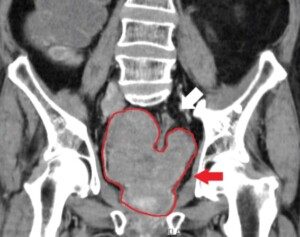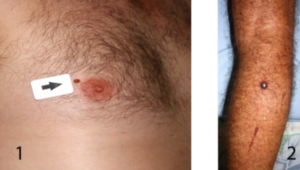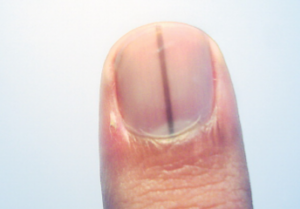You’ve heard of knee, hip and shoulder replacement surgery, but is there actually a wrist replacement surgery for bone-on-bone contact due to the wearing down of cartilage?
I got to wondering about this after an X-ray of my hand revealed mild arthritis – the type in which the cartilage between bones wears down or “thins out.”
This was an incidental finding; the X-ray was a standard study for an unrelated problem: an obvious trigger thumb.
“The doctors like to get the whole hand for trigger thumb,” the X-ray tech told me.
Imagine my surprise when the orthopedic doctor informed me that the X-ray was showing some arthritis.
He pointed to the area. The wrist is made up of eight bones. The area of “arthritis” involved only a few bones.
He said that it’s possible that this situation was responsible for the trigger thumb, but there was no way to know for sure.
The doctor explained that trigger thumb can result from a slight change in hand integrity.
Ironically, he said that the trigger thumb was also possibly caused by long-term intense gripping during weightlifting.
We’ll just never know. My mother had trigger thumb; for all we know, it’s largely genetic.
Arthritis in the Wrist: Eventual “Total Wrist Replacement”?
I’ve never had pain in this wrist. In fact, I’ve been using it quite intensely for decades lifting heavy weights.
I also do rock-wall climbing.
It’s a damn strong wrist. The doctor said that mild osteoarthritis in this area doesn’t always cause symptoms.
Mild osteoarthritis of the wrist does not always progress to severe disease.
The progression of wrist OA varies widely among people and depends on factors such as joint use, underlying conditions, injury history and overall joint health.
According to the American Academy of Orthopaedic Surgeons, some people with early-stage OA experience slow progression or long periods of stability, while others may worsen more rapidly, particularly if the joint is subjected to continued stress or prior trauma.
Wrist replacement surgery is called total wrist arthroplasty. So yes, it indeed exists.
It involves replacing a severely damaged wrist joint, often due to advanced osteoarthritis (but can also be due to rheumatoid arthritis), with an artificial implant.
While less common than hip or knee replacements, it can significantly relieve pain and restore functional movement.
According to the American Society for Surgery of the Hand, many patients regain enough motion and strength to perform daily tasks like eating, dressing and typing, though heavy lifting or repetitive use may be limited to preserve the implant.
According to a study published in The Journal of Hand Surgery, fewer than 1,500 TWAs are performed annually in the U.S.
This low number is due to the complexity of the wrist joint, variable outcomes and the preference for alternative treatments like wrist fusion in severe cases.
Diagnosed with mild wrist osteoarthritis?
And are you worried it’ll eventually progress to a situation so bad that you’ll need a wrist replacement surgery?
Severe OA of the wrist is relatively uncommon in the general population, but is more frequently seen in people with a history of wrist trauma.
According to the American Academy of Orthopaedic Surgeons, primary OA in this area is rare because the wrist is not a weight-bearing joint.
However, trauma to the wrist, such as a fracture, is a more typical cause of severe OA in this joint.
This is great news to athletes, particularly muscle building or powerlifting enthusiasts who are diagnosed with asymptomatic mild osteoarthritis in their wrist.
Severe wrist OA is typically associated with specific risk factors rather than general aging alone.
 Lorra Garrick is a former personal trainer certified by the American Council on Exercise. At Bally Total Fitness, where she was also a group fitness instructor, she trained clients of all ages and abilities for fat loss and maintaining it, muscle and strength building, fitness, and improved cardiovascular and overall health.
Lorra Garrick is a former personal trainer certified by the American Council on Exercise. At Bally Total Fitness, where she was also a group fitness instructor, she trained clients of all ages and abilities for fat loss and maintaining it, muscle and strength building, fitness, and improved cardiovascular and overall health.
.










































